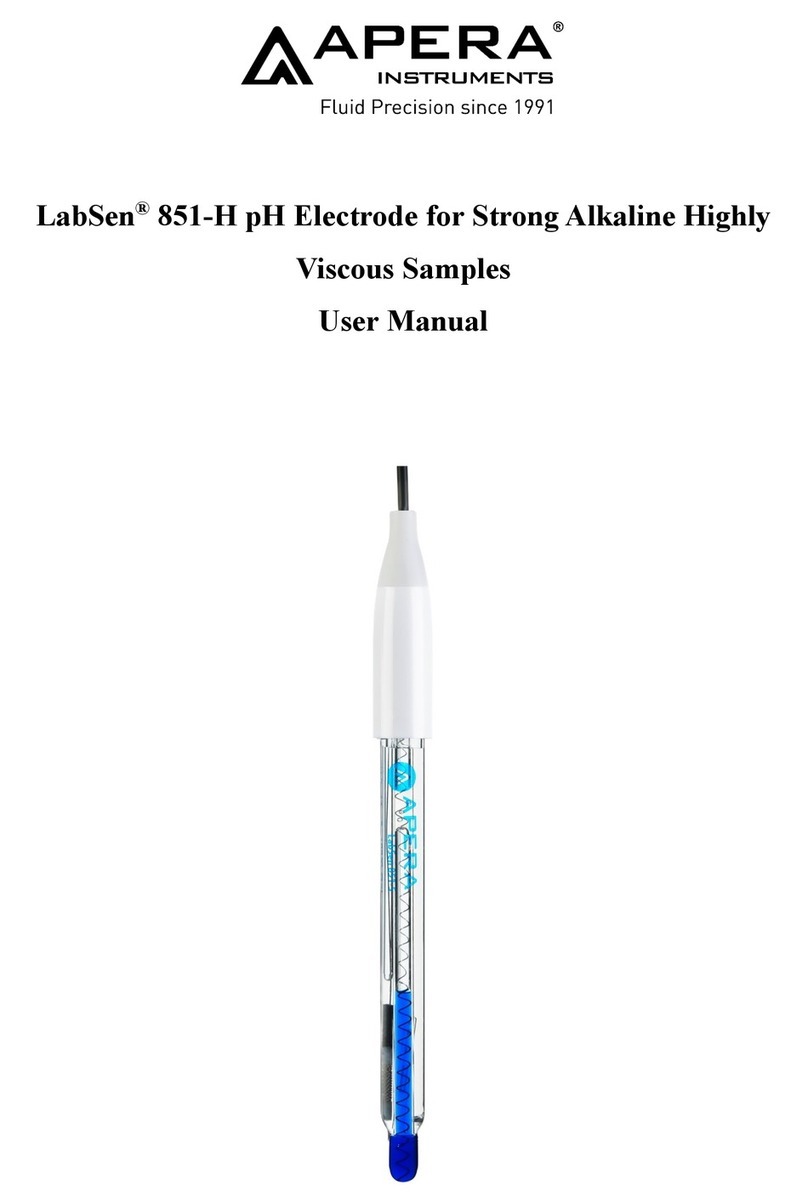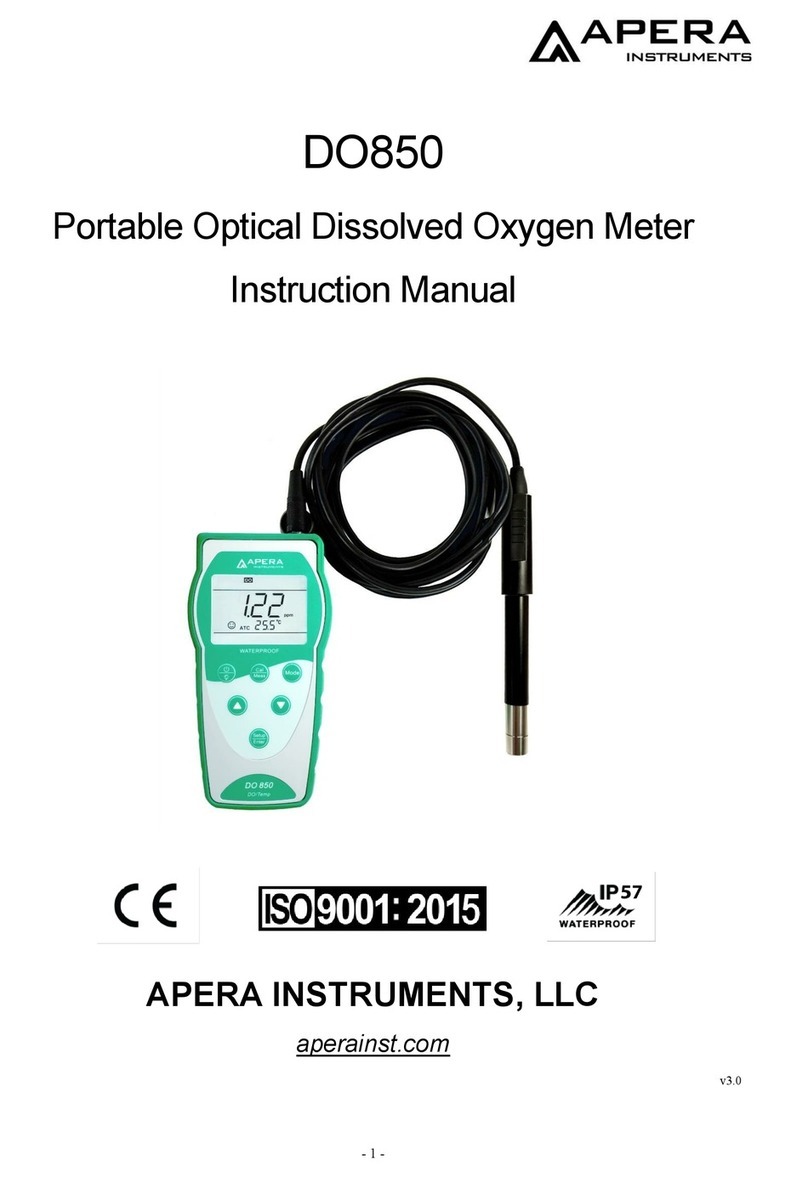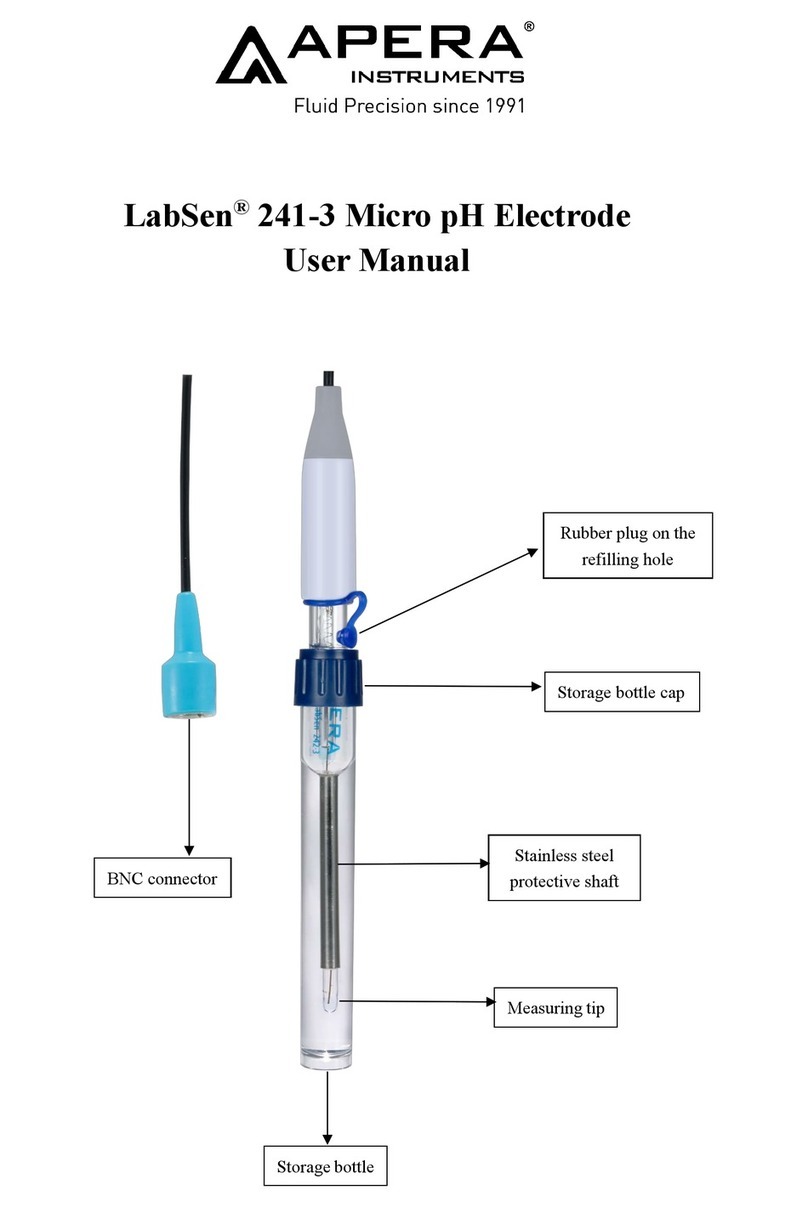Table of Contents
1Overview..............................................................................................................................- 3 -
1.1 Luminescent optical sensor. ..........................................................................................- 3 -
1.2 Intelligent Instrumentation..............................................................................................- 3 -
2Technical Specifications .......................................................................................................- 4 -
3Instructions ..........................................................................................................................- 5 -
3.1 LCD Screen...................................................................................................................- 5 -
3.2 Key Operation ...............................................................................................................- 6 -
3.3 Batteries ........................................................................................................................- 7 -
3.4 Instrument Socket .........................................................................................................- 7 -
3.5 Display mode.................................................................................................................- 7 -
3.6 Data storage, recall, and clear. ......................................................................................- 8 -
3.7 Backlighting ...................................................................................................................- 8 -
3.8 Automatic Power-Off .....................................................................................................- 8 -
4Optical Dissolved Oxygen Probe..........................................................................................- 9 -
4.1 Probe Structure .............................................................................................................- 9 -
4.2 Probe Maintenance .......................................................................................................- 9 -
4.3 Sensor Cap .................................................................................................................- 10 -
5Preparation for Calibration .................................................................................................- 10 -
5.1 Dissolved Oxygen Units Selection...............................................................................- 10 -
5.2 Resolution Selection....................................................................................................- 11 -
5.3 Temperature Unit Selection .........................................................................................- 11 -
5.4 Air Pressure Compensation.........................................................................................- 11 -
5.5 Salinity Compensation.................................................................................................- 11 -
6Calibration..........................................................................................................................- 12 -
6.1 Saturated Oxygen Calibration......................................................................................- 12 -
6.2 Zero-Oxygen Calibration .............................................................................................- 12 -
6.3 Special Notes for Calibration .......................................................................................- 13 -
7Measurement .....................................................................................................................- 13 -
8Parameter Settings ............................................................................................................- 14 -
9USB Communication..........................................................................................................- 17 -
10 Complete Kit ......................................................................................................................- 19 -
10.1 What’s in the box.........................................................................................................- 19 -
10.2 Accessories for separate purchase..............................................................................- 19 -
11 Warranty...............................................................................................................................- 20 -
12 Trouble Shooting..................................................................................................................- 21 -
11 Appendix A: Oxygen Solubility Table (760mm Hg)..............................................................- 22 -
12 Appendix B: DO % Calibration Values................................................................................- 23 -






























